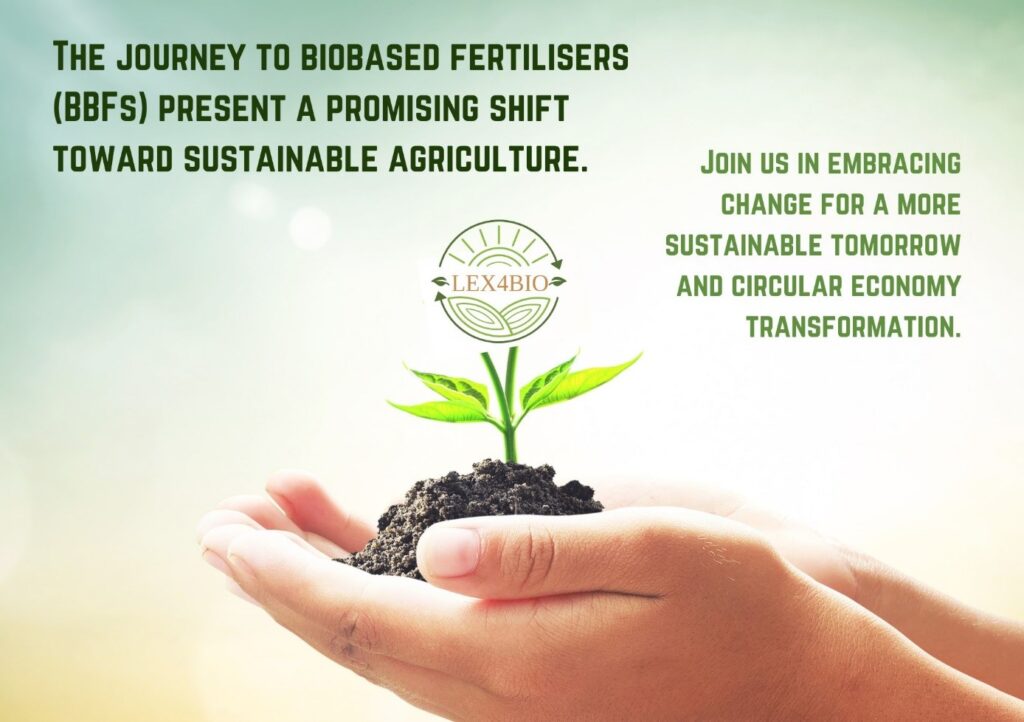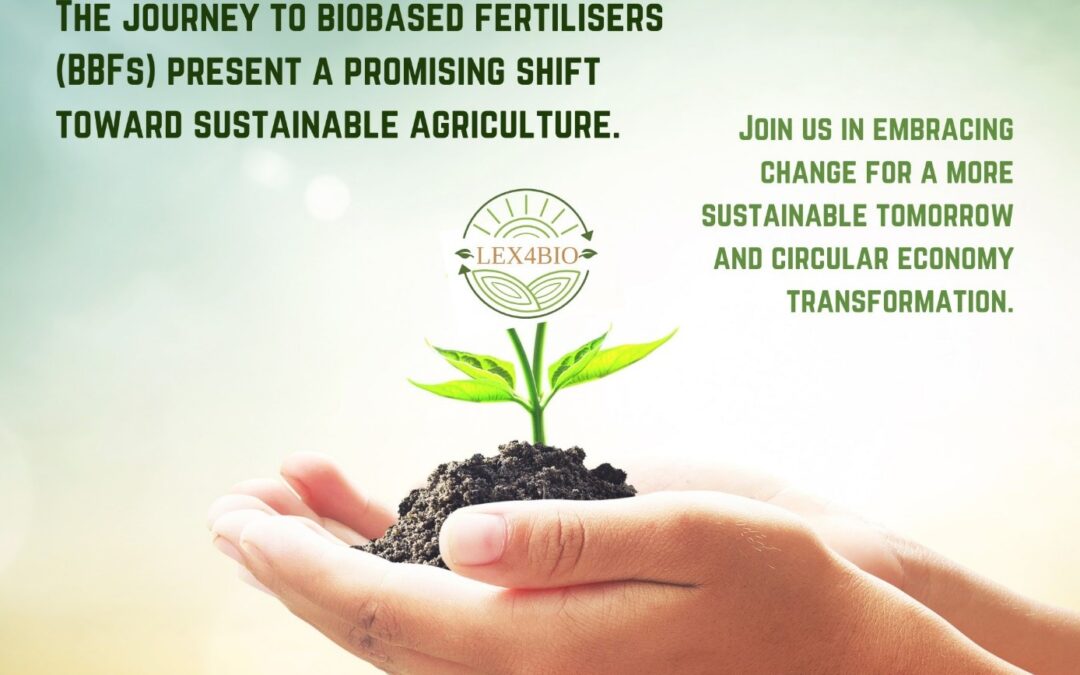By: Marzena Smol, Magdalena Andrunik, Dominika Szołdrowska, Paulina Marcinek

The journey to biobased fertilisers (BBFs) presents a promising shift toward sustainable agriculture. While challenges like production costs and consumer perceptions exist, strategic efforts in awareness, policy support, research, and community engagement can pave the way for a greener future. By understanding and addressing these nuances, we contribute to building a resilient and eco-friendly agricultural system. Join us in embracing change for a more sustainable tomorrow and circular economy transformation.
Driving Forces: Paving the Way to Sustainable Agriculture
Enhancing Agricultural Resilience: A key motivator for farmers is the urgent need to tackle climate-related challenges such as soil erosion and drought. BBFs emerge as allies in promoting sustainable agricultural practices and building resilience against climatic conditions.
Sustainable Fertilisation Practices: Farmers are increasingly recognising the importance of sustainable fertilisation. BBFs offer a pathway to reduce reliance on non-renewable resources, aligning seamlessly with circular economy principles.
Consumer Demand for Bio-Products: The growing consumer preference for “bio” or “organic” products is creating a market opportunity for BBFs. Farmers respond to the market trend, producing agricultural goods that meet the demand for environmentally friendly and sustainable products.
Legal Regulations Restricting Chemical Fertiliser Use: Regulatory limitations on chemical fertilisers provide a strong incentive for farmers to explore alternatives like BBFs. This shift promotes sustainable agriculture practices, aligning with broader environmental goals.
Tradition of Raw Material Exchange among Local Farmers: In certain regions, a tradition of exchanging raw materials among local farmers incentivizes the use of biobased fertilisers. This practice strengthens local agricultural systems and fosters community cooperation.

Hurdles on the Path: Overcoming Challenges in Biobased Fertiliser Adoption
Cost of Production: A significant barrier is the high production cost associated with processing and treating BBFs. Farmers are challenged by increased expenses, affecting the economic feasibility of these fertilisers.
Consumer Acceptance of Waste-Derived Fertilisers: Concerns about consumer acceptance, especially regarding the use of waste materials like human excrement, pose a critical challenge. Farmers fear negative perceptions and resistance from consumers.
Lack of Experience and Knowledge: The lack of knowledge about the use and storage of BBFs presents a substantial hurdle. Farmers require education and training to effectively utilize these fertilisers and address concerns related to application methods and potential risks.
Limited Fertiliser Availability: Establishing a consistent and reliable supply chain for waste-derived materials proves challenging, limiting access to biobased fertilisers in certain regions.
High Transportation and Application Costs: Farmers express concerns about the high costs associated with transporting and applying BBFs, making them less economically feasible.
Environmental Pollution Concerns: Farmers worry about potential environmental pollution caused by the use of BBFs. Proper management of application rates and nutrient release is crucial to prevent adverse impacts.
Impacts on Consumer and Crop Health: Concerns about the potential impacts of BBFs on consumer health and crop quality underscore the need for stringent safety standards.
Lower Effectiveness and Efficiency: Some farmers perceive BBFs to be less effective and efficient than conventional fertilisers. Addressing this perception is crucial for widespread adoption.
Problems with Social Trust: Building social trust around the use of waste-derived materials in fertilisers requires effective communication and transparent information sharing.
Legal and Regulatory Constraints: Legal and regulatory constraints, particularly in developed western countries, hinder the adoption of biobased fertilisers. Supportive policies are needed to facilitate their production, marketing, and use.
Unpleasant Odour: The presence of unpleasant odour in certain BBFs poses a significant barrier due to its negative impact on user experience and public perception.
Navigating the Future: Overcoming Barriers and Embracing Change
The findings from our comprehensive analysis reveal a nuanced landscape, where the adoption of biobased fertilisers is influenced by a delicate interplay of drivers and barriers. To unlock the full potential of these fertilisers, collaborative efforts from policymakers, researchers, industry stakeholders, and farmers are crucial.
Key Strategies for Promoting BBFs:
- Awareness Campaigns: Targeted campaigns to educate farmers and consumers about the benefits of BBFs.
- Policy Support: Advocate for supportive policies that facilitate the production, marketing, and use of BBFs, ensuring compliance with safety and quality standards.
- Research and Innovation: Invest in research and innovation to improve the effectiveness and efficiency of BBFs, addressing concerns and building farmer confidence.
- Supply Chain Strengthening: Work towards establishing a robust and reliable supply chain for waste-derived materials, ensuring consistent availability.
- Community Engagement: Foster community cooperation by emphasising the local tradition of raw material exchange, strengthening ties among local farmers.
By addressing these strategies, we can collectively contribute to building a sustainable and resilient agricultural system. The journey towards widespread adoption of BBFs may have its challenges, but with concerted efforts, we can pave the way for a greener and more sustainable future.

